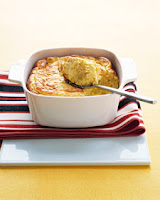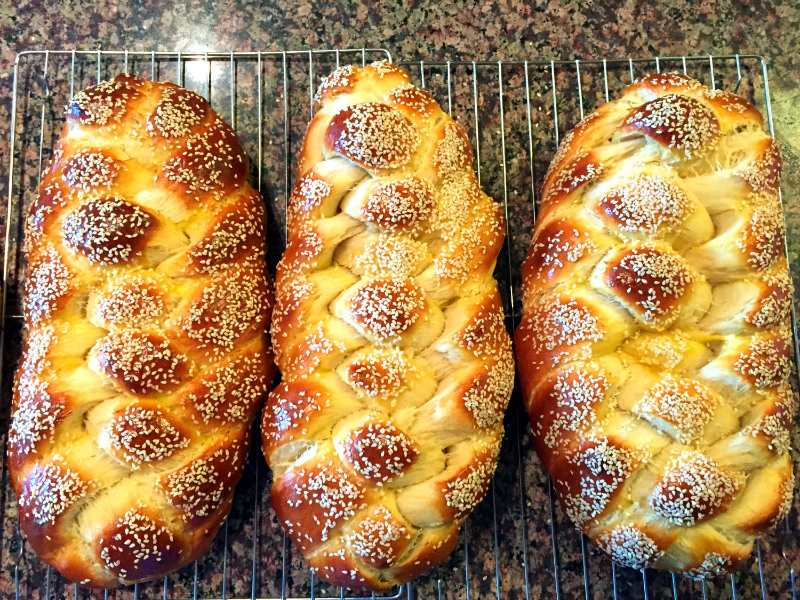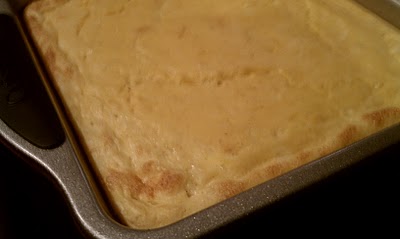Potlucky. Adjective. The quality of having inadvertently succeeded in one's duty to a potluck.
 |
| I got potlucky. This time. |
You see, I consider a potluck to be a form of verbal contract in which individuals entering into a potluck agreement (via RSVP) must bring some food or drink item to fulfill their obligation. I attended a work potluck last week; indeed, I organized it (if sending a confusingly worded Microsoft Outlook calendar invite counts as "organizing"). In doing so, and particularly because I was the "organizer," it was incumbent upon me to bring something.
Except it was a LONG four day week. Prepping for some intense work stuff had gotten the better of me, and I arrived home at 10:30 PM on Thursday night after work and a quick grocery store run, pretty beat, with nary a bit of cooking already done.
Fortunately, I got potlucky.
You see, the dish I was making was nothing more than my own attempt and take on something I saw my French uncle's French mother make the previous weekend. The dish, an onion, cheese, and potato tart, was simple in its essentials, but I had no specifics for quantity, spices, etc. I'd asked her, but I speak minimal French (Bonjour! Alouette!) and she speaks minimal English. Whatever.
Before I started the crust, I preheated my oven to 350 degree, started diced onion sauteeing in butter and set two large red potatoes to a boil in salted water. I began to make a fillo crust as fillo should be prepped, layering it in a 9" pyrex pie dish and brushing melted butter between each layer, trying to tuck the rectangular sheets into something resembling an ovoid. It's cool stuff, fillo; doesn't really look edible when you play with it uncooked. And yes, I consciously chose the spelling "fillo" over phyllo. Deal with it.
I continued to cook my onions until they'd caramelized to light brown and become quite sweet, grated up a bunch of cheddar cheese, and made sure to pull the potatoes out of the boiling water right before they finished cooking. Once I had enough layers of fillo -- again, no rhyme or reason, just a wild guess! -- I filled the bottom of the crust with the caramelized onions and covered them with a layer of cheese. On went a layer of potatoes, thinly sliced, another layer of cheese, and another of potatoes. I reserved a little cheese to be added later in the baking process (no burned cheese, please).

Now, I vaguely recalled my uncle's mother using a bit of ground cloves, and so I followed suit, sprinkling a small amount, less than a 1/4 teaspoon, between layers. Just a sniff of the proceedings informed me the cloves were a good call. Finally, I painted the edges with more melted butter and set the whole thing to bake for about 15-20 minutes. Five minutes before it finished I added the final layer of cheese.
The dish came out nicely. Well, it looked nice. I'd experimented too much to have much of an idea of what it would actually taste like. I went to sleep, finally, ready to try the damn thing just to see if it was any good.
 |
| Kinda looks like I have a heavy hand with the cloves. I promise I didn't. |
The next day was go time. Now, the crust had gotten a little soggy spending the night in the fridge, as is liable to happen, so a brief reheat in the oven at work was necessary as we approached lunchtime. Good thing, too; the crust ended up as flaky and delicate as only fillo can be, so I imagine that the last minute stint in the oven had been necessary. I think the tart came out was pretty tasty -- the crust was golden brown, the filling was savory, rustic, even earthy, and the folks at work ate it (so it can't have been that bad!). The bottom crust was a bit of a pain to cut through, but other than that, no complaints. It seems, despite no real recipe, too little sleep and barely enough time, I'd gotten potlucky.
If I have a real complaint, it's frustration at myself that I didn't photograph the other dishes my coworkers made. There was Vermont-style baked beans (in a special baked beans crock!!!), a broccoli salad, beets, eggplant punjabi, cookies, chips and guac -- definitely a fun way to liven up lunch.
Here again, the money closeup:


 The recipe, found here, involved bringing butter, corn kernels, corn meal, cayenne pepper, and milk to a boil before stirring in cheddar cheese. After the mixture cooled somewhat, I stirred in egg yolks and folded in egg whites I'd beaten to the point where small peaks started to form. The mixture, which already kinda looked at that point like something I would eat, baked 20-odd minutes in a 375 degree oven. In other words, the whole thing was easy.
The recipe, found here, involved bringing butter, corn kernels, corn meal, cayenne pepper, and milk to a boil before stirring in cheddar cheese. After the mixture cooled somewhat, I stirred in egg yolks and folded in egg whites I'd beaten to the point where small peaks started to form. The mixture, which already kinda looked at that point like something I would eat, baked 20-odd minutes in a 375 degree oven. In other words, the whole thing was easy. recipe,
recipe,  snacks,
snacks,  vegetarian
vegetarian 














